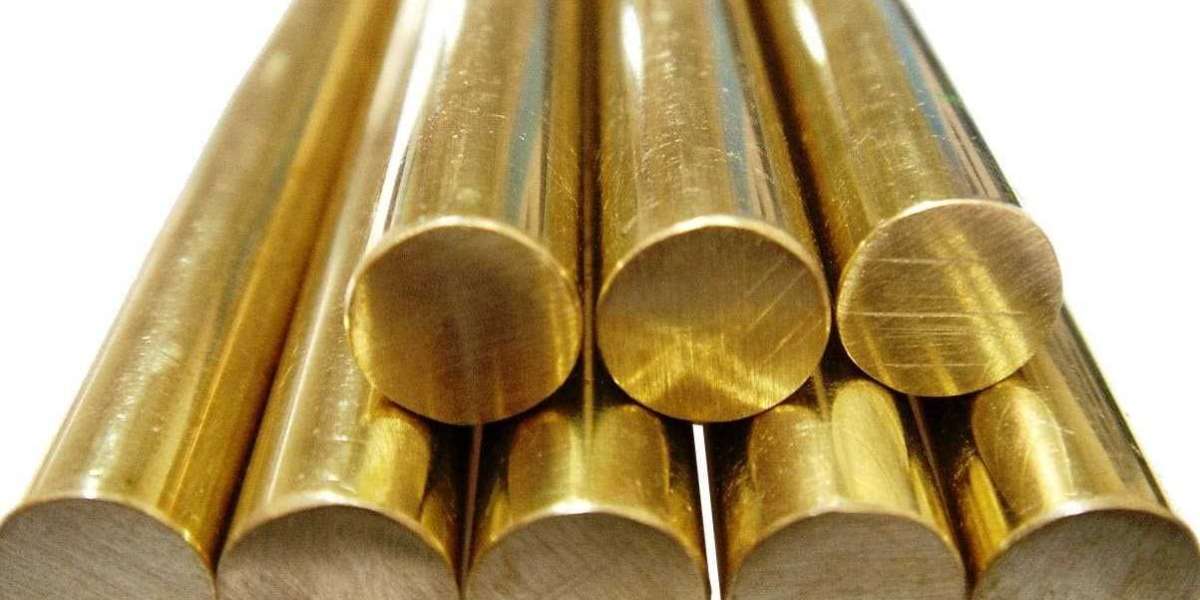Brass round bars are fundamental engineering materials prized for their unique blend of strength, corrosion resistance, and workability. These cylindrical metal rods, composed primarily of copper (Cu) and zinc (Zn), serve critical functions across plumbing, marine, electrical, and architectural applications.
This in-depth guide covers:
✅ Brass composition and metallurgical properties
✅ Common alloy grades and their specific advantages
✅ Industrial and commercial applications
✅ Key benefits compared to alternative materials
✅ Expert selection criteria for your projects
Understanding Brass Composition
Brass is a non-ferrous alloy with variable copper-zinc ratios that determine its characteristics:
Base Composition
Copper (60-90%) – Provides corrosion resistance and electrical conductivity
Zinc (10-40%) – Lowers cost while improving strength and machinability
Alloying Additives
| Element | Purpose |
|---|---|
| Lead (Pb) | Enhances machinability |
| Tin (Sn) | Improves seawater resistance |
| Aluminum (Al) | Increases strength and corrosion resistance |
| Iron (Fe) | Boosts hardness and wear resistance |
Mechanical Physical Properties
Brass round bars offer an exceptional property matrix:
| Property | Value Range | Advantage |
|---|---|---|
| Tensile Strength | 300-700 MPa | Withstands mechanical stress |
| Hardness (Brinell) | 60-200 HB | Optimized for machining |
| Melting Point | 900-940°C | Suitable for brazing/soldering |
| Electrical Conductivity | 28% IACS | Excellent for electrical parts |
| Thermal Conductivity | 120 W/mK | Ideal for heat exchangers |
Popular Brass Alloy Grades
1. Free-Cutting Brass (C36000)
Composition: 61.5% Cu, 35.5% Zn, 3% Pb
Features: Best machinability among brass alloys
Typical Uses: Precision turned parts, fittings, fasteners
2. Naval Brass (C46400)
Composition: 60% Cu, 39.2% Zn, 0.8% Sn
Features: Superior saltwater corrosion resistance
Typical Uses: Marine hardware, propeller shafts
3. Cartridge Brass (C26000)
Composition: 70% Cu, 30% Zn
Features: Excellent cold-working properties
Typical Uses: Ammunition cases, plumbing fixtures
4. High-Strength Brass (C67800)
Composition: 62% Cu, 36.6% Zn, 1.4% Al
Features: Enhanced mechanical strength
Typical Uses: Heavy-duty bushings, bearing sleeves
Industrial Applications Breakdown
1. Fluid Handling Systems
Valve stems, pump components – Leverages corrosion resistance
Water meter parts – Benefits from machinability and durability
2. Electrical Engineering
Connector pins, terminal blocks – Utilizes conductivity and oxidation resistance
Switchgear components – Takes advantage of spark resistance
3. Marine Technology
Stern tubes, underwater fasteners – Resists biofouling and seawater corrosion
Heat exchanger tubes – Combines thermal transfer with durability
4. Automotive Components
Bushings and bearings – Provides low-friction performance
Fuel system parts – Withstands ethanol-blended fuels
5. Architectural Elements
Decorative railings, door hardware – Offers aesthetic gold-like finish
Musical instruments – Delivers superior acoustic properties
Brass vs Alternative Materials
| Parameter | Brass | Bronze | Stainless Steel | Aluminum |
|---|---|---|---|---|
| Corrosion Resistance | ★★★★★ | ★★★★☆ | ★★★★★ | ★★★☆☆ |
| Machinability | ★★★★★ | ★★★☆☆ | ★★☆☆☆ | ★★★★☆ |
| Conductivity | ★★★★☆ | ★★★☆☆ | ★☆☆☆☆ | ★★★★★ |
| Cost Efficiency | ★★★☆☆ | ★★☆☆☆ | ★★☆☆☆ | ★★★★☆ |
| Aesthetic Value | ★★★★★ | ★★★★☆ | ★★★☆☆ | ★★★☆☆ |
*Key: ★ = Rating (1-5), ☆ = Half-point*
Selecting the Right Brass Round Bar: 5 Key Factors
Alloy Grade – Match to environmental conditions (e.g., C464 for marine use)
Diameter Tolerance – ±0.05mm for precision applications
Surface Finish – Mill finish for machining vs polished for decorative use
Certifications – Look for ASTM B16, EN 12164, or DIN 17660 compliance
Supplier Capabilities – Verify in-house machining and testing facilities
Quality Assurance Testing
Reputable manufacturers like Vixon Piping conduct:
✔ Spectrochemical analysis – Verifies alloy composition
✔ Tensile testing – Confirms mechanical properties
✔ Eddy current inspection – Detects surface defects
✔ Microstructure examination – Ensures proper grain structure
Conclusion Call-to-Action
Brass round bars remain indispensable engineering materials combining functional performance with economic viability. Their unique property matrix enables solutions across industrial, marine, electrical, and decorative sectors.






